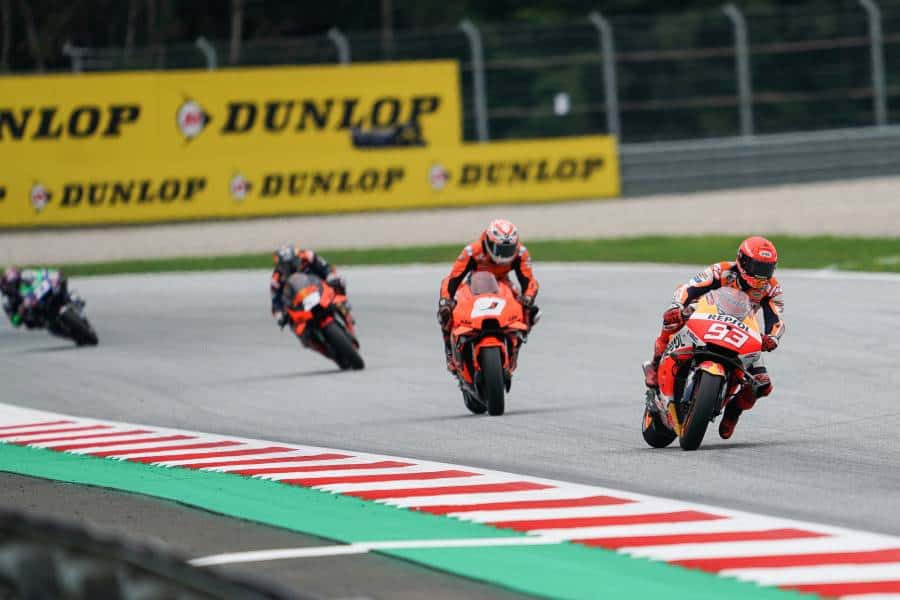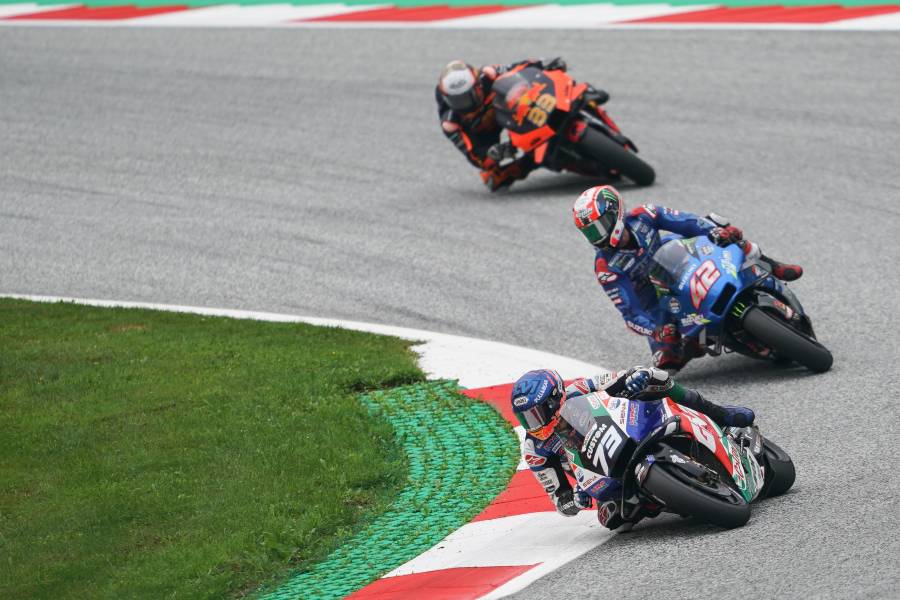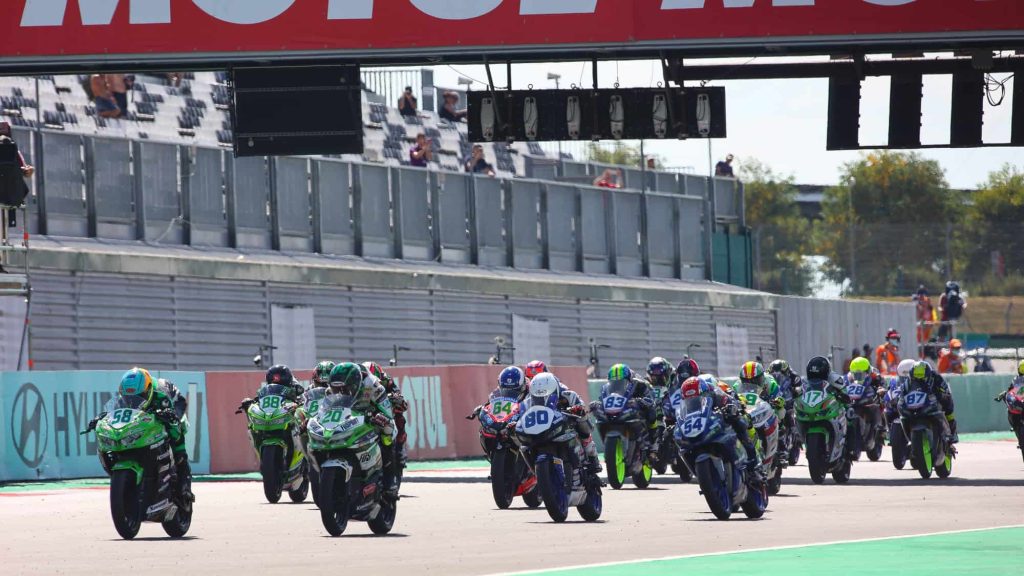MotoGP bikes vs World Superbikes: Are MotoGP bikes faster than Superbikes? Or is it the other way around?
We said this before: It’s not simple to figure out which is faster between two vehicles that compete in different racing competitions. But we will try for your peace of mind—and ours. MotoGP bikes vs World Superbikes, which are faster?
The governing body of motorcycle racing, the Fédération Internationale de Motocyclisme (FIM), organizes and oversees both categories, but they are extremely different. Here’s why.
MotoGP
Deemed as the Formula 1 of motorbike racing, MotoGP remains one of the most exciting motorsport competitions in the racing world and for a reason. The MotoGP class was previously known as the 500cc class, but due to several revisions throughout the years, the current engine displacement is 1000cc.

The MotoGP season consists of 18 rounds, each with three 45-minute practice sessions; a rider’s time determines whether he will compete in the first or second qualifying segment. The top ten competitors advance to QP2, while the others participate in QP1 and the top two advance to the second round. This is what makes the racing insane!
Grid places 13 and below will be determined by the times in the first portion, while the top 12 positions will be determined by the times in the second section. Sunday races typically span a distance of 95 to 130 kilometers and last 40 to 45 minutes, depending on the track.
Pit stops are uncommon, although they are allowed, particularly in wet weather when riders can exchange to a bike with alternative tyre specs. The top 15 drivers receive points, which range from 25 for the fastest driver to one point for the 15th place finisher.
The motorcycles are essentially prototypes, not production models. This implies that budgets for building bikes, as well as for teams and riders, are substantially higher in MotoGP.
The motorcycles itself have a maximum engine displacement of 1000cc, four cylinders, and an 81mm bore. There is no supercharging or turbocharging of the engine, and only six gears are permitted. A MotoGP bike must weigh at least 158kg. The engines have a maximum output of 240 horsepower and can reach speeds of up to 217 mph.
MotoGP is made up of three racing classes, with Moto2 and Moto3 being the two leagues that precede the premier championship MotoGP.

Let’s take a look at some of the bikes in the Moto3, Moto2, and MotoGP classes.
All classes’ chassis/frames are prototypes, as are the engines of the MotoGP and Moto3 bikes; however, the Moto2 bikes employ a production-based engine.
Moto3 bikes have a one-cylinder 60 horsepower engine with a displacement of 250cc.
Moto2 bikes have a three-cylinder engine with a displacement of 765cc and a power output of roughly 140 horsepower.
MotoGP bikes have four-cylinder engines with a maximum size of 1000cc and a power output of roughly 250 horsepower.
MotoGP rules stipulate a combined bike and rider weight of 152 kilograms in Moto3 and 270 kilograms in Moto2.
The minimum bike weight for MotoGP is 157 kilos, and rider weight is not taken into account.
SEE THE RESULTS FROM LAST WEEKEND HERE.
World Superbikes
World Superbike bikes are slower, heavier, and more like the bikes you see on the road than MotoGP bikes. The series races on the same tracks as MotoGP on a regular basis, allowing us to compare lap times. For example, this year’s WSB pole position for race two at Motorland Aragon was 1:49.884, compared to 1:46.635 for MotoGP.
The WSB series uses factory-spec gear and electronics on significantly modified versions of production bikes. It must be a homologated version of any production-spec superbike available for purchase anywhere in the globe, with minimal room for innovation or modifications to the bikes itself; the rules are far more restrictive.The minimum rider age is 18, just like in MotoGP. Despite the fact that both are organized by FIM, the racing weekends are not the same. Before the two ‘Superpole’ sessions, where the grid is determined, there are four free practice sessions spanning throughout Friday and Saturday. However, MotoGP was the inspiration for this, with the fastest riders being assigned to SP2 and the slowest to SP1.
The fastest two riders will make it to SP2 in the first leg, while the others will start from 13th. The top 12 grid positions will be determined in the next round of qualifying. Then there are two races, each with a distance of no more than 110 kilometers.

While there are restrictions on changing the bikes, alterations to the exhausts, engine management, suspension, brakes, and some engine parts are permitted. The minimum weight is 168kg, and the engine displacement ranges from 750cc to 1200cc depending on the number of cylinders, which ranges from two to four.
Conclusion
MotoGP bikes are prototypes (experimental) machines built specifically for their class and are not intended for sale to the general public. Superbikes, on the other hand, are road bikes that have been carefully tuned for racing.
When compared to the SBK, MotoGP motorcycles are faster.
For more racing action, visit NASCAR Chronicle.
